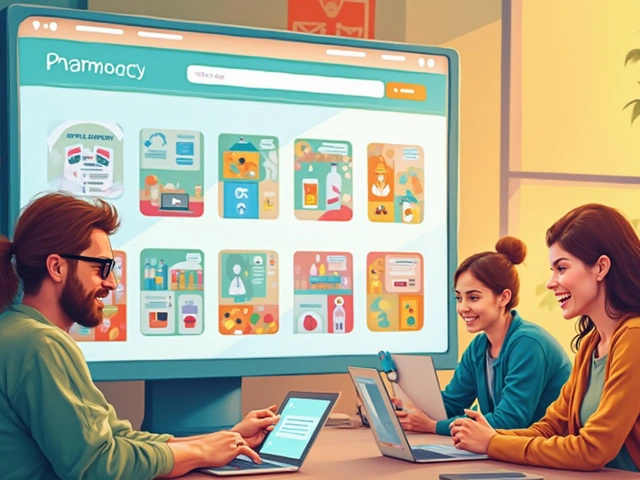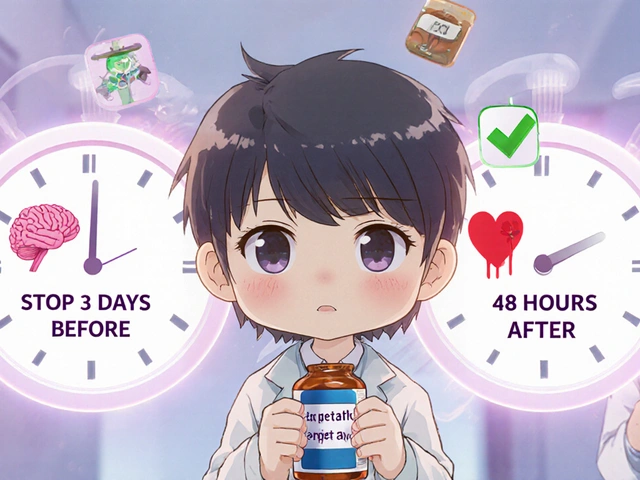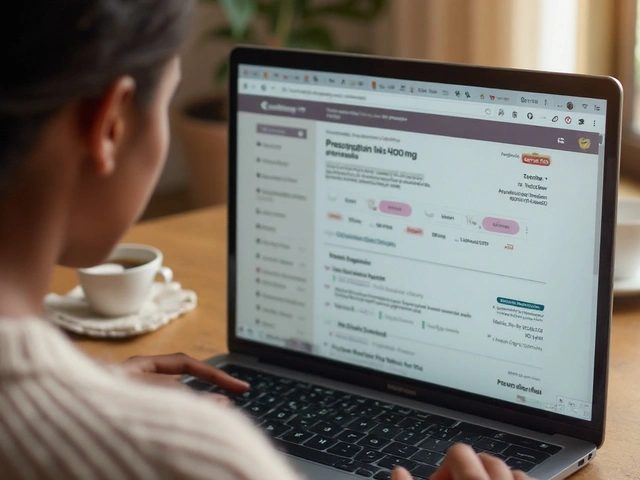Non‑Stimulant ADHD Drugs: Types, Benefits, and How to Choose
When working with non‑stimulant ADHD drugs, medications that improve attention without the classic stimulant buzz. Also known as non‑stimulant ADHD treatments, they are often prescribed when stimulants cause side effects or aren’t effective.
One of the most talked‑about options is bupropion, an antidepressant that also boosts dopamine and norepinephrine levels. It’s marketed under names like Wellbutrin and helps many adults stay focused without the jittery feeling of amphetamines. Another key player is atomoxetine, a selective norepinephrine reuptake inhibitor specifically approved for ADHD. Unlike stimulants, atomoxetine builds up in the system gradually, which can reduce abuse potential.
For younger patients or those with co‑existing high blood pressure, doctors often turn to guanfacine, an alpha‑2A adrenergic agonist that calms the brain’s overactivity. It’s usually taken at night and can also help with sleep problems that often accompany ADHD. Clonidine works similarly, offering another low‑dose option that targets the same pathway.
How Non‑Stimulant Drugs Fit Into an ADHD Management Plan
Non‑stimulant ADHD drugs encompass a range of mechanisms: bupropion influences dopamine, atomoxetine blocks norepinephrine reuptake, and guanfacine modulates adrenergic receptors. Because they act on different neurotransmitters, they often complement behavioral therapy and lifestyle changes. For example, a patient might use atomoxetine to stabilize attention during school, while a parent applies guanfacine in the evenings to improve bedtime routines.
Choosing the right medication requires a few clear steps. First, evaluate any existing health conditions—heart issues, seizure history, or depression can steer the decision toward one drug over another. Second, consider the onset speed: bupropion and atomoxetine may take a few weeks to show full effect, whereas guanfacine can help with immediate calming. Third, discuss potential side effects; bupropion may raise blood pressure, atomoxetine can cause stomach upset, and guanfacine may lead to drowsiness.
Many patients wonder whether they can obtain these meds safely online. The answer is yes, but only through licensed pharmacies that require a valid prescription. Look for UK‑registered online pharmacies, verify their GPhC registration, and compare prices before you click ‘buy.’ A step‑by‑step guide is included in the articles below, showing you how to avoid scams and get authentic medication delivered to your door.
Insurance coverage is another factor. While stimulants often enjoy broad reimbursement, non‑stimulants sometimes need prior authorization. Checking your plan’s formulary early can save you headaches later. If a drug isn’t covered, a generic version—like bupropion SR—can be a cost‑effective alternative.
Beyond the main three, there are niche options worth mentioning. Viloxazine, a newer non‑stimulant, works on serotonin as well as norepinephrine and is gaining attention for adult ADHD. Similarly, the antidepressant desipramine has off‑label use in some cases, though it requires careful cardiac monitoring.
It’s also important to track progress. Use a simple rating scale—on‑task behavior, impulsivity, and mood—to see how the medication is affecting daily life. Adjustments may be needed after a month or two, and your doctor can tweak the dose or switch to another non‑stimulant if needed.
For parents of children with ADHD, combining medication with school‑based interventions can boost results. A consistent routine, clear expectations, and positive reinforcement work hand‑in‑hand with the calming effects of guanfacine or clonidine.
Adults often face a different set of challenges, such as workplace distractions and managing comorbid anxiety. Here, bupropion’s dual action on mood and focus can be a game‑changer, especially when paired with cognitive‑behavioral strategies.
Safety tips are always handy. Keep a medication list up‑to‑date, store pills out of reach of kids, and never mix these drugs with alcohol or other CNS depressants without medical advice. If you notice sudden mood swings, high blood pressure, or severe dizziness, contact your healthcare provider promptly.
In short, non‑stimulant ADHD drugs offer a flexible toolbox for anyone who needs symptom control without the typical stimulant profile. Whether you’re eyeing bupropion’s energizing boost, atomoxetine’s steady focus, or guanfacine’s calming effect, there’s a pathway that can fit your lifestyle and health needs.
Below you’ll find detailed guides on each of these medications, tips for safe online purchasing, and practical advice for integrating them into your everyday routine. Dive in to discover which option aligns best with your goals and how to make the most of your treatment plan.
Strattera (Atomoxetine) vs ADHD Medication Alternatives: In‑Depth Comparison

Explore a detailed comparison of Strattera (atomoxetine) with ADHD medication alternatives, covering efficacy, side‑effects, cost, and best‑fit scenarios for patients.
read more



